This article discusses using Live ND in New Zealand during a photography tour my wife and I did in late 2024. Live ND is a computational photography technology that is available on a number of Olympus/OM cameras. It provides an in-camera effect similar to using a neutral density filter.
NOTE: Click on images to enlarge. If you would like to view this article in a range of other languages click on the Canadian flag in the upper right corner.
During our recent self-guided tour of New Zealand my wife and I had the opportunity to use Live ND a number of times when photographing waterfalls. I hate using a tripod and we both like to travel with as little gear as possible. Live ND technology is an ideal solution for us.

My wife captured the above image of Purakaunui Falls which is located on the South Island of New Zealand. It is one of the most photographed waterfalls in the country, and accessed by a well maintained 15-minute forested trail. This image was captured handheld using Live ND, at a focal length of 20 mm (efov 40 mm), f/8, 1/5, ISO-200. My wife’s E-M1 Mark III does not have built-in GPS as found in my E-M1X.
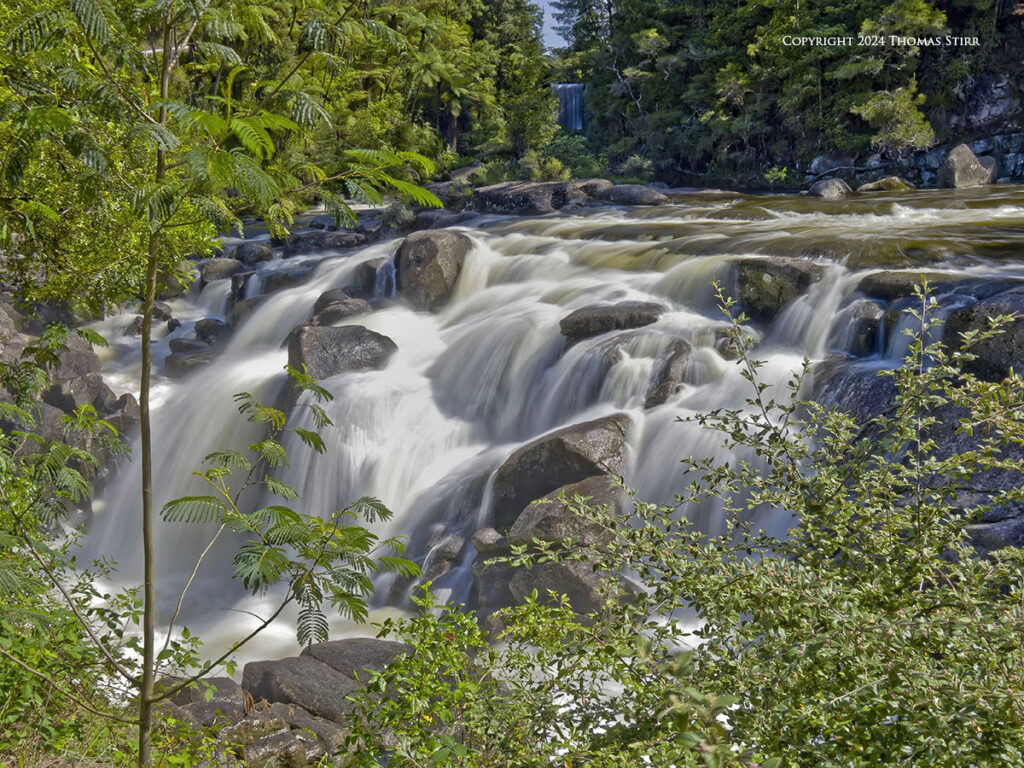
The image of McLaren Falls was captured handheld using Live ND at a focal length of 20 mm (efov 40 mm). I used an aperture of f/14, 1/2, ISO-100. The waterfall is located on the North Island about 1.5 hours from Hamilton.
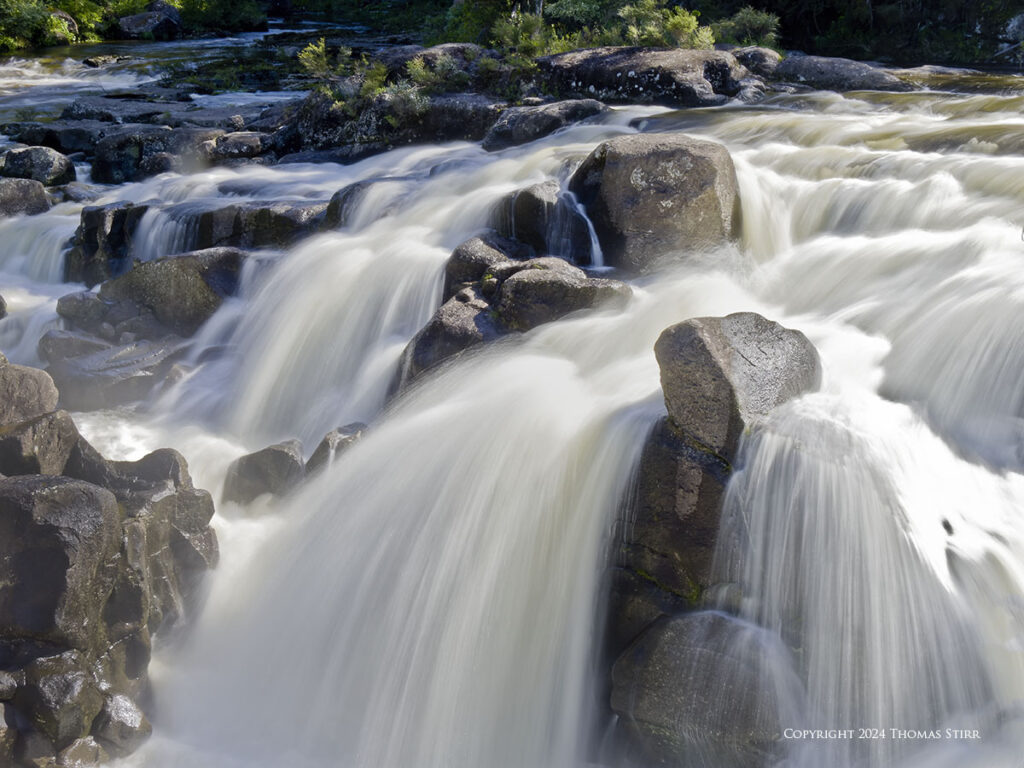
We were extremely fortunate to visit McLaren Falls during one of the 26 days of the year when water is released from McLarens Dam for recreational users. This increases the water flow from 1 cubic metre per second to 14 cubic metres per second. On previous visits to McLaren Falls the water was flowing at a low level and people were sunbathing on some of the rocks in the current.
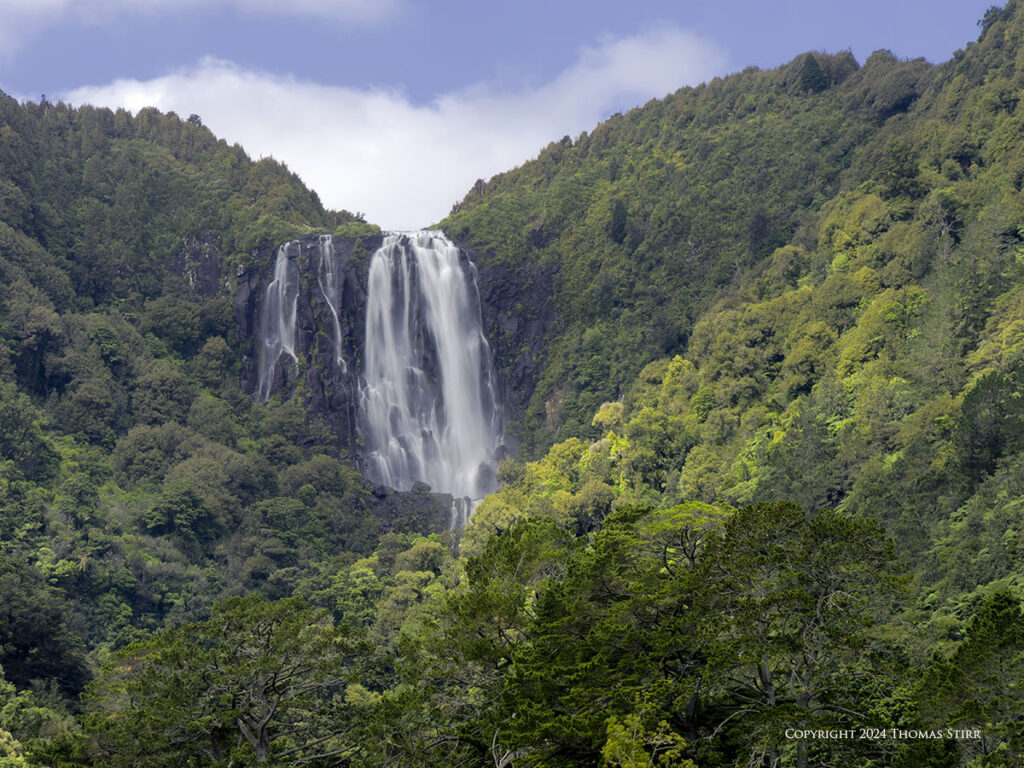
Wairere Falls is situated on the North Island and is the highest waterfall on the island. The track to reach Wairere Falls can be challenging and takes 3 to 4 hours return to complete. Our schedule did not afford sufficient time to make it halfway to the lookout… let alone to the summit.
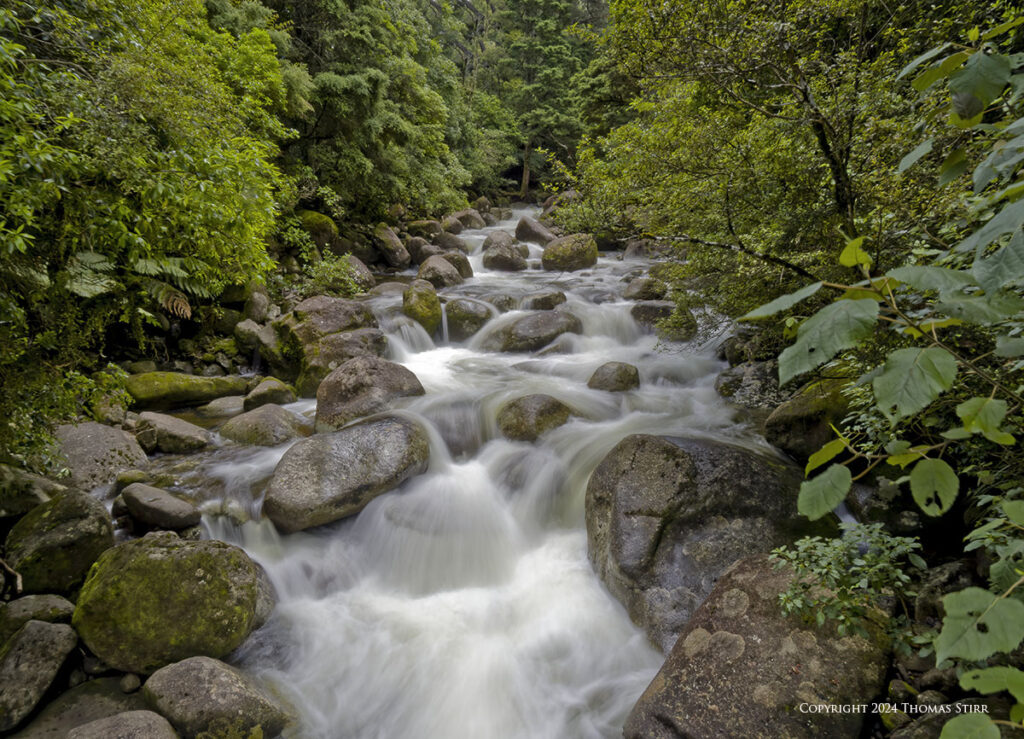
We did enjoy the portion of the trek that we did complete. Part way up the track we crossed a footbridge over the stream pictured above.
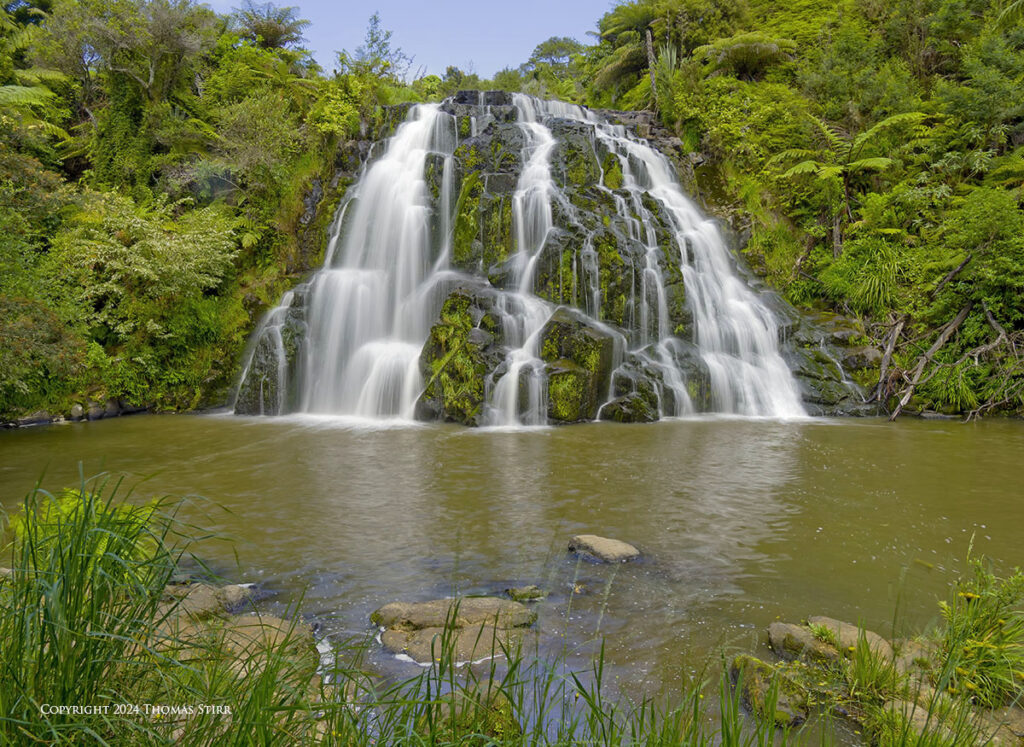
Owharoa Falls is close to Karangahake Gorge, and is one of the popular waterfalls to visit in New Zealand. It is located on the North Island about a 2 hour drive from Auckland.
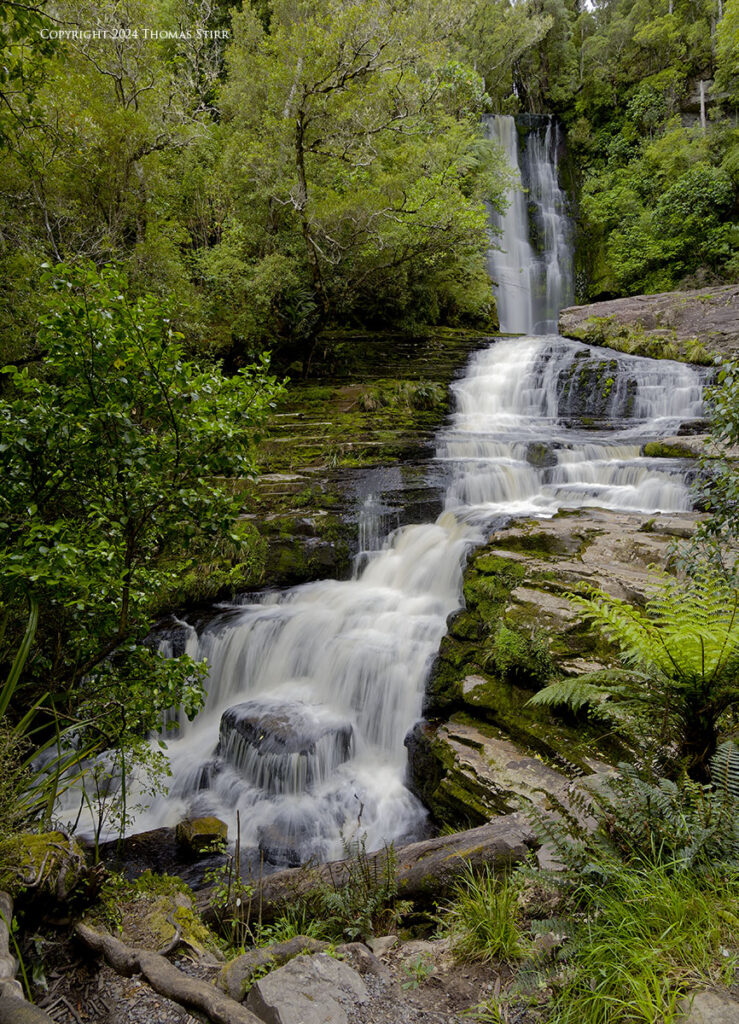
McLean Falls is absolutely our favourite waterfall in New Zealand. It is situated in the Catlins area on the South Island. McLean Falls combines an upper and lower falls, both of which are accessible. It takes about 40 minutes to make the return trek in and back… and is worth every step along the way. The forested trail has almost a magical quality. Something that my wife and I have enjoyed on a number of visits to the South Island.
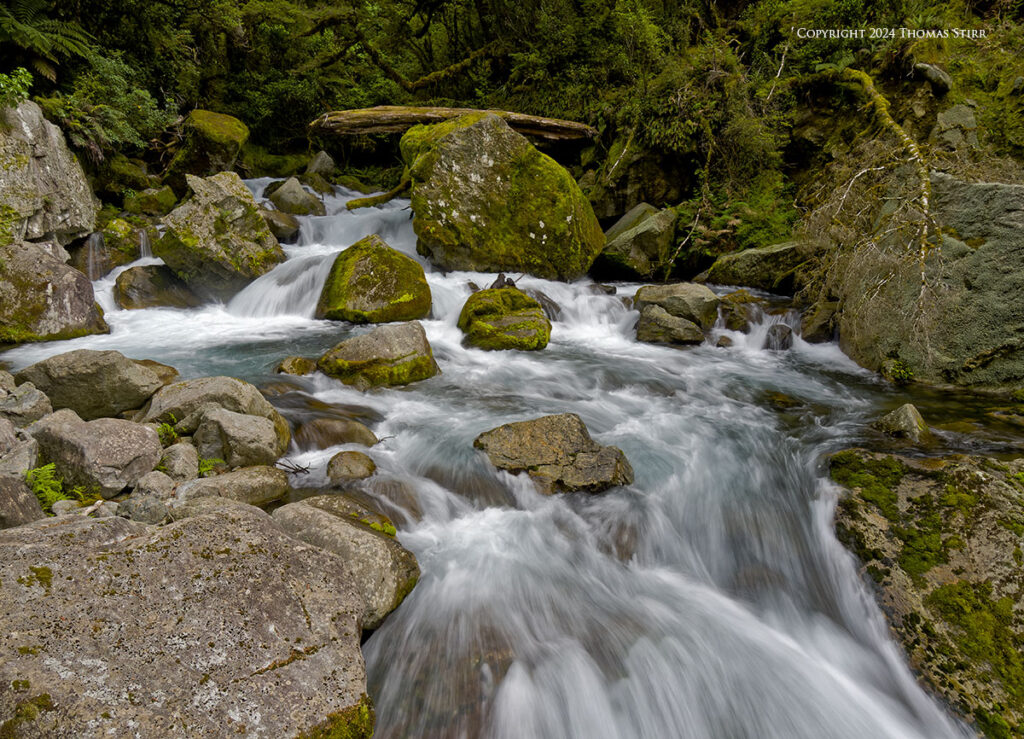
The Lake Marian Falls Track is located about 30 kilometres from Milford Sound on the South Island. The falls are a short 20 minute trek, consisting of easy to intermediate hiking. We did this trek as part of our guided tour to Milford Sound and quite enjoyed it.
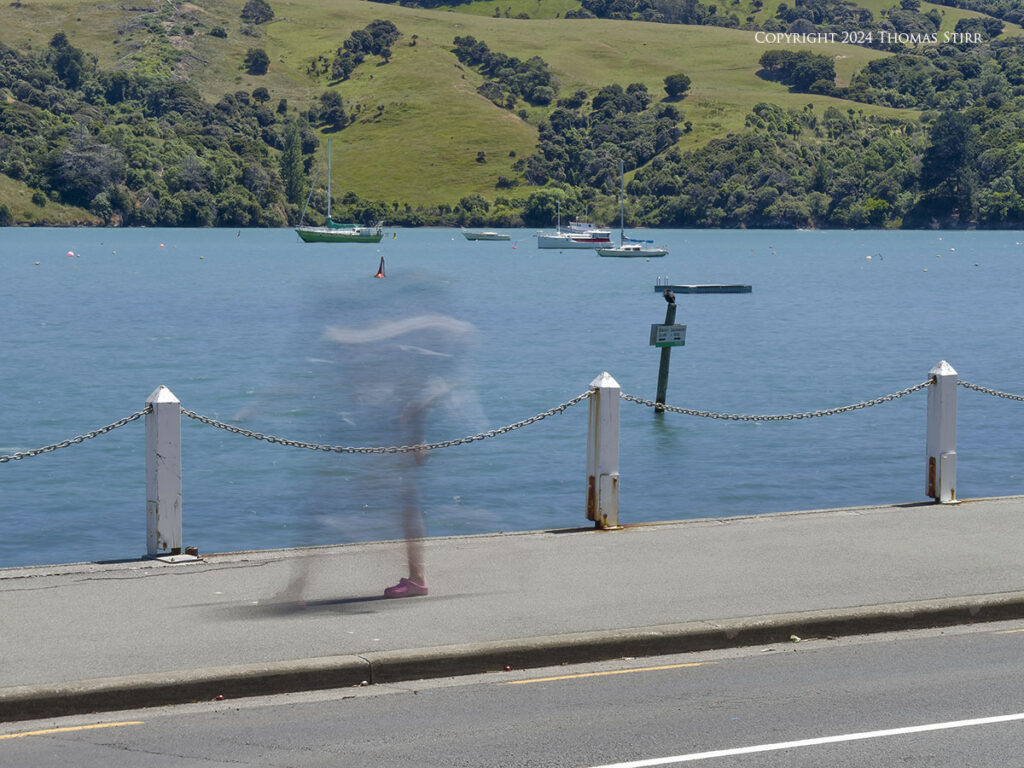
Of course Live ND can be used for more than just to create a blurred effect with moving water. The handheld test image above of a ‘disappearing person’ was captured while we were having a picnic lunch in Akaroa on the South Island.
If you own an Olympus/OM camera and have not tried the Live ND computational photography technology… it may be fun to give it a try. Combined with the excellent IBIS (in body image stabilization) found in Olympus/OM cameras, Live ND can expand what is possible with handheld photography.
Technical Note
Photographs were captured handheld using camera gear as noted in the EXIF data. All photographs were captured using Live ND computational photography technology. All images were created from RAW files using my standard process in post. This is the 1,479 article published on this website since its original inception in 2015.
How you can keep this website advertising free
My intent is to keep this photography blog advertising free. If you enjoyed this article and/or my website and would like to support my work, you can purchase an eBook, or make a donation through PayPal (see Donate box below). Both are most appreciated. Sometimes all we need as photographers is a bit of inspiration. We hope you can find some of that inside Finding Visual Expression II.
Finding Visual Expression II is available for download for an investment of $11.99 CDN. The best viewing experience of this eBook will be at 100% using Adobe Acrobat Reader.
You may be interested in all of the 30 concepts covered in both of these related eBooks. If so, you may want to also consider Finding Visual Expression.
Finding Visual Expression is available for download for an investment of $11.99 Cdn. The best viewing experience of this eBook will be at 100% using Adobe Acrobat Reader.
Our other eBooks include Images of Ireland, New Zealand Tip-to-Tip, Nikon 1: The Little Camera That Could, Desert & Mountain Memories, Images of Greece, Nova Scotia Photography Tour, and a business leadership parable… Balancing Eggs.
If you click on the Donate button below you will find that there are three donation options: $7.50, $10.00 and $20.00. All are in Canadian funds. Plus, you can choose a different amount if you want. You can also increase your donation amount to help offset our costs associated with accepting your donation through PayPal. An ongoing, monthly contribution to support our work can also be done through the PayPal Donate button below.
You can make your donation through your PayPal account, or by using a number of credit card options.
Word of mouth is the best form of endorsement. If you like our website please let your friends and associates know about our work. Linking to this site or to specific articles is allowed with proper acknowledgement. Reproducing articles, or any of the images contained in them, on another website or in any social media posting is a Copyright infringement.
Article is Copyright 2025 Thomas Stirr. Images are Copyright 2024 Thomas Stirr and Rosemary Stirr. All rights reserved. No use, duplication or adaptation of any kind is allowed without written consent. If you see this article reproduced anywhere else it is an unauthorized and illegal use. Posting comments on offending websites and calling out individuals who steal intellectual property is always appreciated!

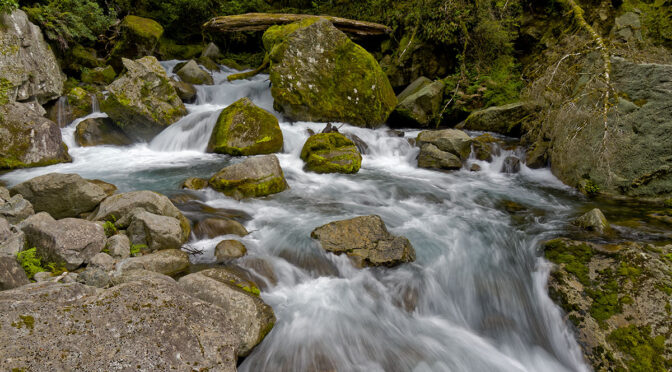


Hi. Thanks for publishing the article and images. I love using Live ND w/ my OM1.2 & OM5.2. I use a similar shutter speed, preferring a little texture in the flowing water.
With MFT lenses, I rarely use apertures greater than f5.6 due to diffraction and my lenses are sharpest at or close to wide open.
I am curious why you chose to stop the lens down f8 to f20 with all the images, even those with no discernible close objects in the foreground. I wasn’t sure if the sun was too bright since your ISOs were occasionally higher than 100. FWIW, I carry Kase Wolverine Revolution Magnetic filters … a CPL (about a 2-stop equivalent) and a ND64 (6-stop) for overly bright days and the filters will work in conjunction with Live ND. Regards, Bill
Hi Bill,
I need a lot more ongoing experimentation and practice. Prior to our trip to New Zealand in late 2024 I don’t remember doing any landscape photography for a year… maybe longer. 🙂
The images were captured midday, often in very bright conditions.
Tom
Interesting piece Tom as my wife and I are off on Nordic cruise to celebrate our upcoming 40th anniversary.
I wanted to have a go at the stern of the ship to photograph
the sea being churned up in slow motion.
Your piece was perfect timing many thanks!
Mark
Hi Mark,
I’m glad the article was helpful for you. Have a wonderful cruise with your wife celebrating your 40th anniversary!
Tom
Thanks Tom!